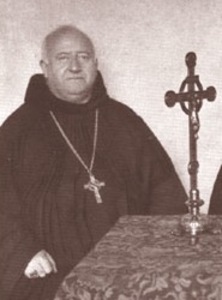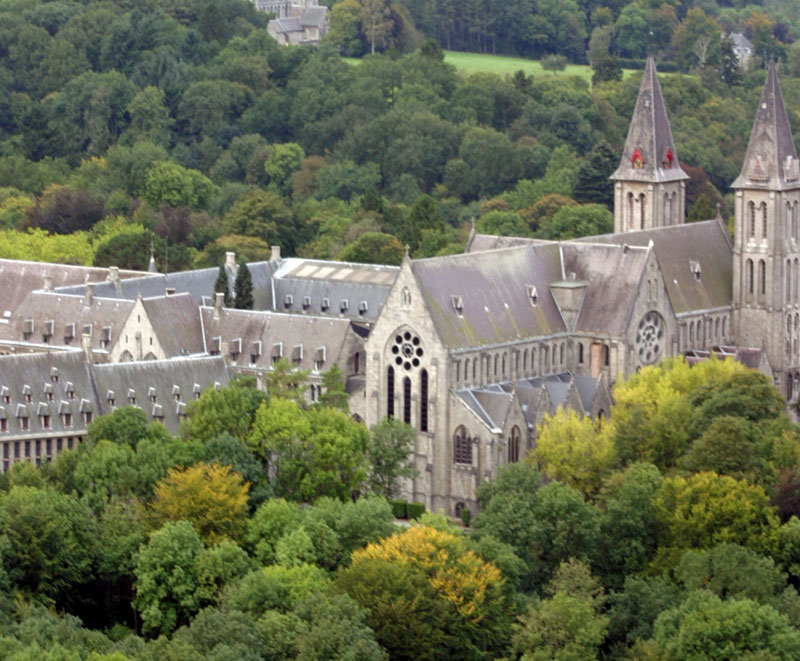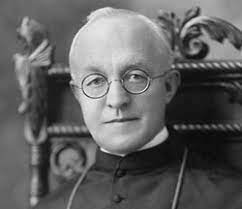Since the time of Pope Gregory the Great and St. Benedict in the sixth century, liturgical prayer has always been very close to the heart of monastic spirituality. Throughout the medieval period, at such centers as Cluny and Vezelay, the Benedictines played a crucial role in developing and promoting liturgical reform and renewal. In the nineteenth century, Abbot Guéranger of Solesmes did much to restore important aspects of the liturgical heritage, and his work on the liturgy was followed by that of many Benedictine scholars of the late nineteenth and twentieth century, such as Fernand Cabrol. The work of these European Benedictine scholars was in turn to have a profound influence on prominent American monks and early leaders of the liturgical movement in this country, such as Virgil Michel.
Among Benedictine spiritual writers of the twentieth century, perhaps none has been more influential than Dom Columba Marmion (1858-1923). Born in Ireland, Marmion went on to become abbot of Maredsous abbey in Belgium. It was a great and moving moment for me to visit Maredsous and pray at his grave in the abbey church there several years ago.

Dom Columba Marmion
Abbot Marmion cultivated an intense Christ-centered piety, drawn primarily from the scriptural teachings of St. Paul and St. John, as well as many patristic and medieval sources. His published conferences and letters are regarded as some of the most influential Catholic spiritual writings of the twentieth century. Throughout his writings, Marmion’s use of liturgical texts is quite striking. For him, almost every word and phrase of the liturgy, whether prayers, sequences, antiphons or hymns, are seen as inexhaustible sources of grace to animate the hearts and minds of believers. Marmion’s explication of the spiritual significance of the liturgy was so great that one pioneer of the Liturgical Movement, Lambert Beauduin, once called Marmion “the theologian of the liturgy”.

Maredsous Abbey
The whole course of the spiritual life is set forth in a series of conferences entitled “Christ the Life of the Soul.” The purpose of the work, as Marmion himself describes it, is
“to fix the eyes and the hearts of my readers on Jesus Christ and on His Word. He is the Alpha and the Omega of all sanctity and His word is the divine seed, from which all sanctity springs.” (Christ the Life of the Soul, b. Herder Book Co, 1925, p.13)
This Christocentric focus leads Marmion to develop the scriptural image of the church as the mystical body of Christ, and the far-reaching consequences and responsibilities of membership in this body. In a beautiful section, Marmion stresses how the diversity of individual members of the church should not lead to discord, but rather to what he calls a “harmony of unity”. Our common baptism, Marmion urges, should make us people of joy, gratitude and confidence, for whom every action becomes an opportunity to develop our calling to identify with the work of Christ on earth.

Dom Marmion
Our Christian activity finds its ultimate source in the Eucharist. Marmion explains with great depth of beauty the fruits and graces which come from full participation in the Eucharist. In discussing the eternal priesthood of Christ, Marmion stresses how participation in the Eucharist brings about our complete identification with Christ as both priest and victim. Far from envisioning a passive role for the laity, Marmion develops the concept of the priesthood of all the faithful: “As you see, it is the faithful united to the priest, and through him, to Jesus Christ, who offer this sacrifice.” It is our whole selves, “with the eyes, the mind, and the heart”, that we enter into union with Christ and experience spiritual transformation:
“It is in this union with Christ that, as I have said, the true life of the soul is to be found. Jesus is the vine, we are the branches; grace is the sap that rises up into the branches to make them bear fruit. Now it is principally by the gift of himself in the eucharist that Christ makes grace abound in us.” Ibid., pp. 256-261.
The significance of the Eucharist and the great feasts of the liturgical year is thoroughly developed in Christ in His Mysteries. In this magnificent work, Abbot Marmion stresses how through reading the scriptures, we come to know Jesus Christ in our lives, and how this is deepened through participation in the public liturgical life of the church:
“We know that it is especially by the liturgy that the Church brings up the souls of her children in order to make them like unto Jesus and thus perfect that image of Christ which is the very form of our predestination.” (Christ in His Mysteries. London, Sands & Co., p. 21)”
According to Dom Marmion, when we approach the Eucharist in faith, the result will be the gifts of reverence, and most of all love for God and neighbor. Transformed by these gifts, we truly can go forth to serve God and one another, and the Eucharist can become a source of personal, ecclesial and societal renewal. So as the seasons of the liturgical year begin once more to unfold before us, let us embrace them, one Mystery at a time.






